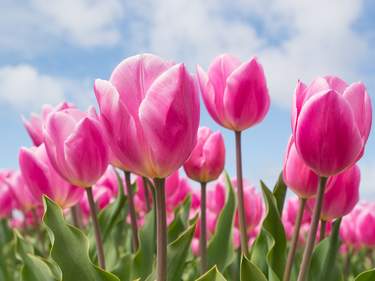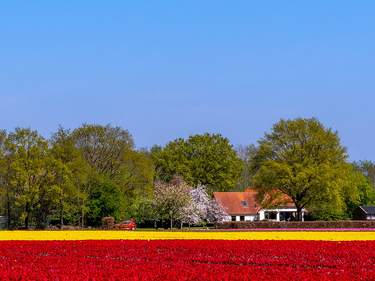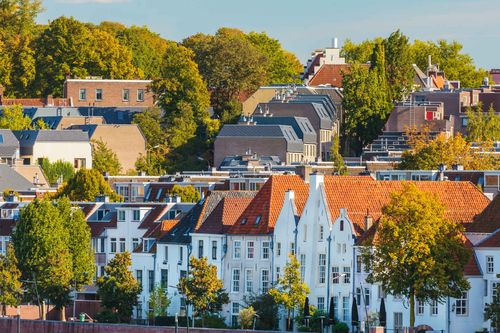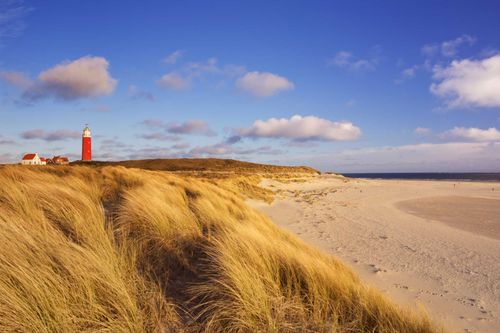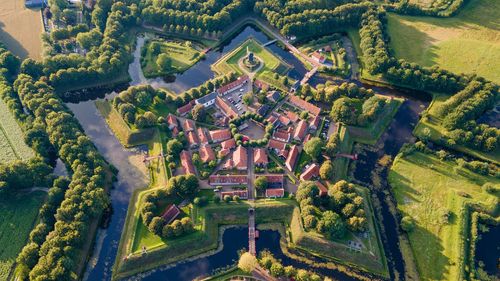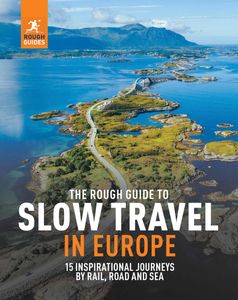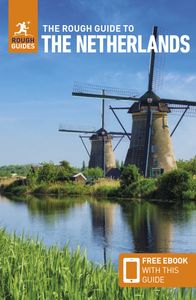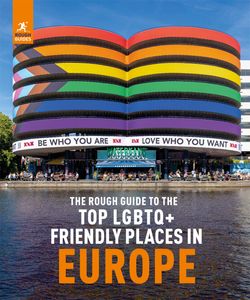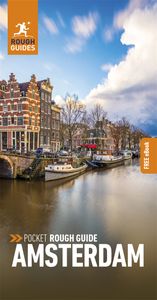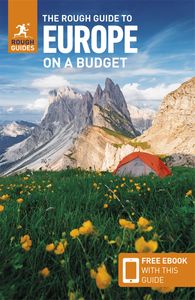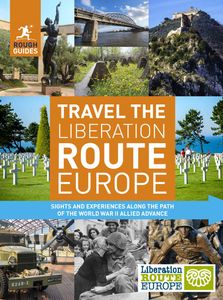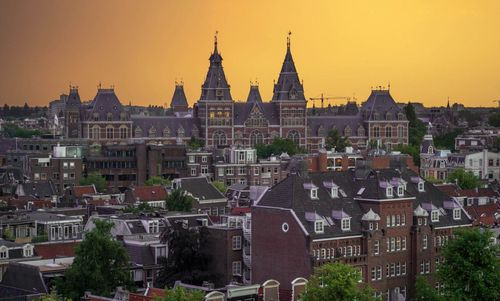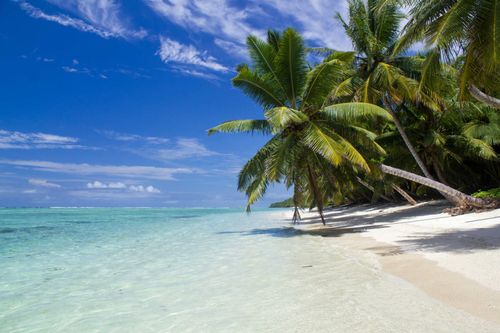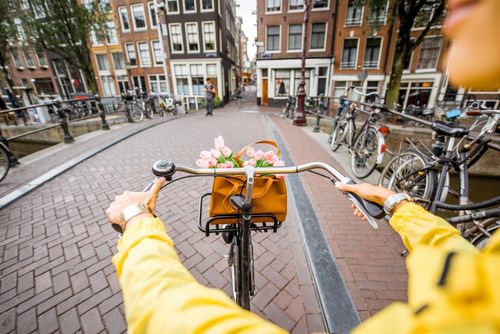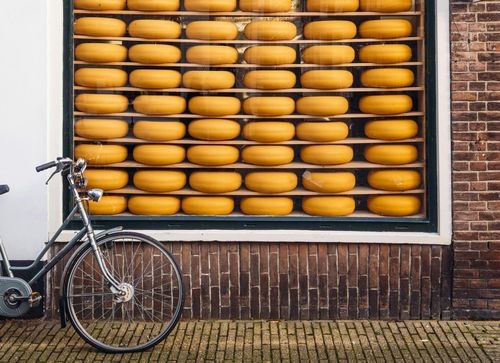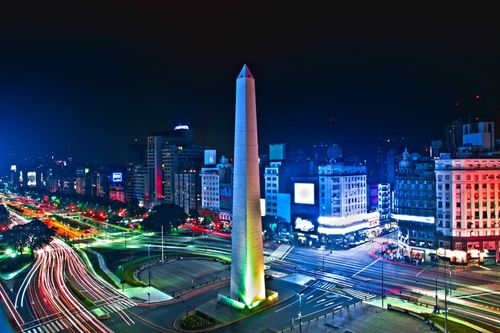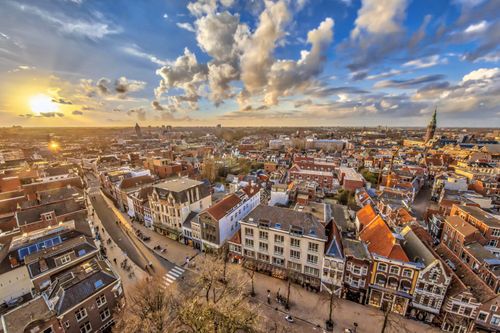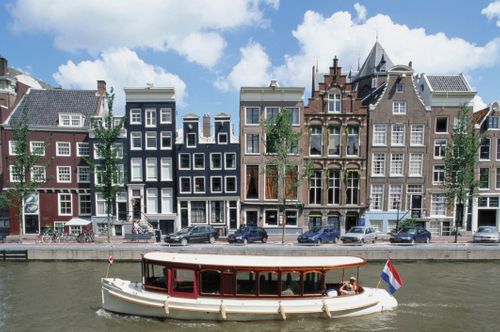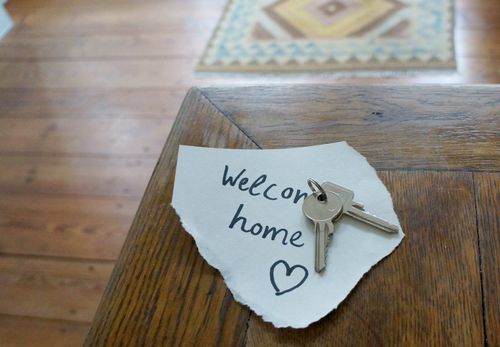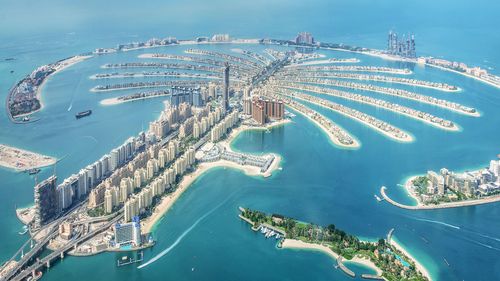In the west of the country, beyond Amsterdam, the provinces of Noord- and Zuid-Holland are for the most part unrelentingly flat, reflecting centuries of careful reclamation work as the Dutch have slowly pushed back the sea. These provinces are predominantly urban, especially Zuid-Holland, which is home to a grouping of towns known collectively as the Randstad (literally “rim town”), an urban sprawl that holds all the country’s largest cities and the majority of its population. Travelling in this part of the country is easy, with trains and buses that are fast, inexpensive and efficient; highlights include easy-going Haarlem; the old university town of Leiden; Delft, with its attractive medieval buildings and diminutive, canal-girded centre; and the gritty port city of Rotterdam, festooned with prestigious modern architecture. Den Haag (The Hague), is well worth a visit, too, a laidback and relaxing city, seat of the Dutch government and home to several excellent museums. Neither should you miss the Keukenhof gardens, with the finest and most extensive bulbfields in the country. To the north of Amsterdam, the old Zuider Zee ports of Enkhuizen and Hoorn are very enticing, as is the small town of Alkmaar, with its unashamedly touristy cheese market, and the small villages and unspoilt dunescapes of the coast.
Beyond lies a quieter, more rural country, especially in the far north where a chain of low-lying islands – the Frisian Islands – separates the open North Sea from the coast-hugging Waddenzee. Prime resort territory, the islands possess a blustery, bucolic charm, and thousands of Dutch families come here every summer for their holidays. Apart from Texel, the islands lie offshore from the coast of the province of Friesland. Friesland’s capital, Leeuwarden, is a likeable, eminently visitable city, while neighbouring Groningen is one of the country’s busiest cultural centres.
To the south, the provinces of Overijssel and Gelderland are dotted with charming old towns, notably Deventer and Zutphen, while their eastern portions herald the Netherlands’ first few geophysical bumps as the landscape rolls up towards the German frontier. Here also are two diverting towns: Arnhem, much rebuilt after its notorious World War II battle, but a hop and a skip from the open heaths of the Hoge Veluwe National Park, and the lively college town of Nijmegen.
Further south still are the predominantly Catholic provinces of Limburg, Noord-Brabant and Zeeland. The last of these is well named (literally “Sealand”), made up of a series of low-lying islands and protected from the encroaching waters of the North Sea by one of the country’s most ambitious engineering plans, the Delta Project. Heading east from here, you reach Noord-Brabant, gently rolling scrub-and farmland which centres on the historic cities of Breda and ’s Hertogenbosch, and the more modern manufacturing hub of Eindhoven, home to electronics giant Philips. The hilly province of Limburg occupies the slim scythe of land that reaches down between the Belgian and German borders, with its cosmopolitan capital, Maastricht, being one of the Netherlands’ most convivial cities.
Top image © R.A.R. de Bruijn Holding BV/Shutterstock
